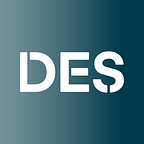Collaboration overload and burnout
As a leader of a team, you may be seeing burnout in some of your employees. You might also be struggling with burnout yourself. In this month’s employee article on burnout, we focus on burnout at the individual level. For leaders of teams and organizations, this article dives into the role of collaboration in burnout.
Dynamics of collaborative overload
Over the last decade, technology advances have allowed for faster and more frequent collaborative communications in the workplace. Real-time communications platforms like Zoom and Teams have allowed local and remote employees and teams to be in constant contact with each other. At the same time, we’ve seen significant reductions in employees’ focused work and reflection time. In articles for Harvard Business Review and McKinsey, leadership expert Rob Cross describes this phenomenon as “collaboration overload.”
The costs of collaboration overload include:
- Lower engagement. Our energies focus on immediate teams, resulting in less innovation and interaction with other parts of the organization.
- Higher attrition. Overwhelmed people leave. New talent must be acquired, but also, there’s the cost of the remaining employees who shoulder that work until the replacement arrives.
- Reduced well-being and increased mental health costs.
Reclaim your time
Would you like to have one or possibly two hours of your day back? According to Cross, “people who collaborate well get back 18 percent to 24 percent of their time” while improving their well-being.
Cross notes that collaboration overload may be driven by our identities. “The first step in combating collaborative overload is to recognize how much of it is driven by your own desire to maintain a reputation as a helpful, knowledgeable, or influential colleague or to avoid the anxiety that stems from ceding control over or declining to participate in group work.”
Once you’ve identified how your identity influences your decision making:
- Acknowledge situations where you’re likely to be influenced. Anticipate collaborations or additional work you would normally be drawn into. Think about alternative solutions you might be able to offer. Remember that it’s OK to say, “Let me think about that and get back to you.”
- Clarify your objectives. What are your strengths and values? How do you bring those into your work? How do they align with your organization’s priorities?
- Reduce or eliminate unnecessary collaboration. Use your objectives to help you prioritize. “Efficient collaborators decide when they do, or don’t, have unique value to add,” says Cross.
- Use your calendar to boost your well-being. For example, place “energizing interactions after de-energizing ones,” or schedule conversations with others that promote professional development.
- Be persistent. This is an ongoing process.
Manage teams with burnout prevention in mind
Dawn Klinghoffer, head of people analytics at Microsoft, recently shared findings of their employee surveys. The results confirm the impact of collaboration overload:
- As collaboration time increased, well-being decreased.
- As people set aside more focused time, well-being improved.
- As vacation time increased, so did well-being.
Klinghoffer’s recommendations for managers are:
- Re-evaluate meetings. Add breaks. Consider staying off Monday mornings and Friday afternoons. Rethink the meeting’s purpose if people are disengaged or multitasking.
- Carve out time for focused work. Use tech to respect quiet work time, both yours and others’ — for example, use “do not disturb” settings, or schedule late night emails to send the next morning.
- Encourage time away. Encouraging time off is a good start, but you’ll need to back that with action. Provide coverage or support, so employees truly feel they can take time off.
- Help the team prioritize. Your team cannot do it all. You might need to put a hold on lower priority or “nice to have” work.
Pursue leadership development
Leadership training can mitigate the risks of burnout in the workplace by providing approaches, practices, and tools supervisors can implement to promote workplace wellbeing. Leadership Development courses offered by the Department of Enterprise Services could be an option for leaders at all levels of your organization.
Request an EAP consultation
Burnout is complex and challenging to both employees and leaders at all levels of the organization. Your EAP is available to provide confidential and expert consultation to you in a variety of areas impacting employee and team performance. Request a consultation online or by calling 877–313–4455.
Subscribe to the EAP supervisor newsletter to get articles and updates by email.
The Washington State Employee Assistance Program (EAP) is a free, confidential program created to promote the health, safety and well-being of public service employees. The EAP is available to provide confidential and expert consultation in a variety of areas. Reach out to EAP online or by calling 877–313–4455. To find out if the Washington State EAP serves your agency or organization, contact your supervisor or human resources department.
Links to external websites are provided as a convenience. The Employee Assistance Program and the Department of Enterprise Services do not endorse the content, services, or viewpoints found at these external sites. Information is for general informational purposes only and is not intended to replace the counsel or advice of a qualified health or legal professional. For further help, questions, or referral to community resources for specific problems or personal concerns, contact the EAP or other qualified professional.
